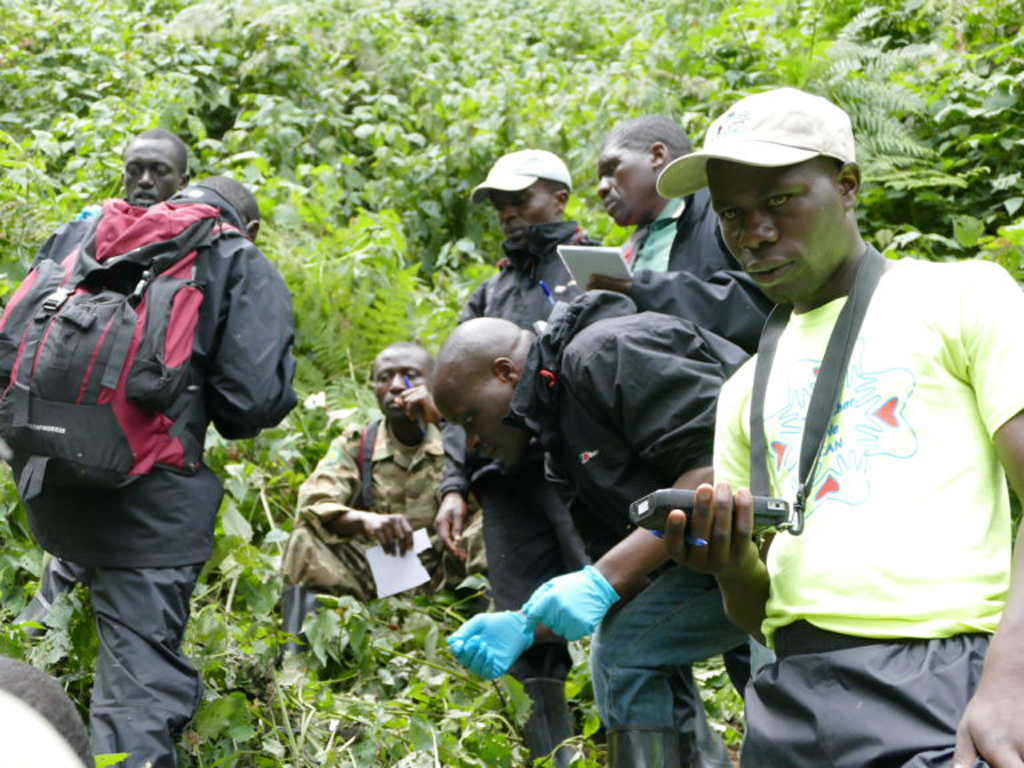
NEWS DESK POST by International Gorilla Conservation Programme (IGCP)
The population of mountain gorillas (Gorilla beringei beringei), one of the world’s most endangered species, is on the rise, and now stands at an estimated 1,063 individuals (1,004 in 2018).
This after a population survey was performed in the Bwindi-Sarambwe area, one of the two remaining areas where this critically endangered great ape is still found (the other being the Virunga Massif area).
The survey results revealed that the population in Bwindi-Sarambwe has increased to 459 from an estimated 400 in 2011. When combined with the previously published figure of 604 mountain gorillas from the Virunga Massif area, the total population now stands at an estimated 1,063 mountain gorillas.
“Slowly but surely a solid future for mountain gorillas is emerging, proving that long-term, collaborative conservation efforts can pull species back from the brink of extinction. This was demonstrated last year with the IUCN reclassification from ‘Critically Endangered’ to ‘Endangered’.” said Anna Behm Masozera, Director of the International Gorilla Conservation Programme (IGCP), which provided technical and financial support to the exercise under an agreement with the intergovernmental Greater Virunga Transboundary Collaboration.

The increase in mountain gorillas is attributed to the effectiveness of conservation policies and strategies, regulated tourism, daily protection and veterinary interventions, intensive law enforcement, community conservation projects, and transboundary collaboration among government institutions and NGOs. Further, these results are a testament to the tireless effort of the rangers and trackers who daily protect and monitor mountain gorillas and their habitat, including those that have been killed in the line of duty.
It is also essential to recognise the role of the communities that live close to these national parks who co-exist with mountain gorillas and contribute to conservation efforts. That said, the survey findings also indicated that the threat of illegal human activities to mountain gorillas and other wildlife has not declined in Bwindi-Sarambwe since 2011, despite the positive developments in community engagement and conservation and tourism initiatives. For instance, survey teams found and destroyed 88 snares during their work.

The exercise involved more than 75 trained survey members from 13 participating institutions along with the support of local governments and communities living around the protected areas. Survey teams walked pre-determined reconnaissance trails, ensuring thorough coverage of all forest areas to sweep the Bwindi-Sarambwe and search for signs of gorillas, other key mammals, and human activities. When fresh gorilla signs were detected, the teams followed the gorilla trail to locate three recent night nest sites. At each of these nest sites, the teams collected faecal samples from nests. The process was completed twice; first from March to May 2018 (62 days), and second from October to December 2018 (60 days). A second sweep allows finding gorillas that were undetected during the first sweep and thus provides more reliable numbers of gorillas. Faecal samples were analysed genetically to determine individual genotypes. Additional scientific publications are expected from the survey.
Despite the rise in numbers, the two populations of mountain gorillas remain relatively small and vulnerable to a potential rapid decline due to factors such as their limited habitat, climate change, dependence on resources in the park by people, and the risk of disease transmission.

To comment on this story: Login (or sign up) to our app here - it's a troll-free safe place 🙂.![]()






